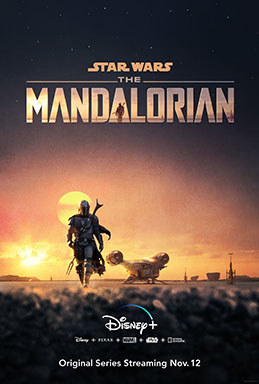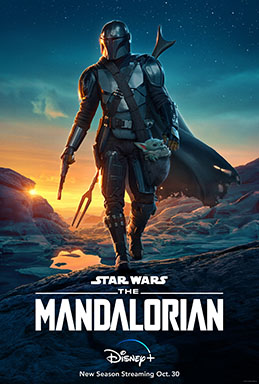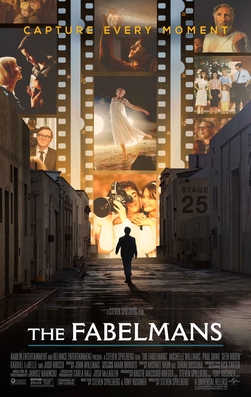
Lucasfilm Ltd. LLC is an American film and television production company founded by filmmaker George Lucas in 1971 in San Rafael, California, though most of the company's operations were moved to San Francisco in 2005. It has been a subsidiary of The Walt Disney Studios since 2012 and is best known for creating and producing the Star Wars and Indiana Jones franchises, as well as its leadership in developing special effects, sound, and computer animation for films.
Industrial Light & Magic (ILM) is an American motion picture visual effects company that was founded on May 26, 1975 by George Lucas. It is a division of the film production company Lucasfilm, which Lucas founded, and was created when he began production on the original Star Wars, now the fourth episode of the Skywalker Saga.

Virtual cinematography is the set of cinematographic techniques performed in a computer graphics environment. It includes a wide variety of subjects like photographing real objects, often with stereo or multi-camera setup, for the purpose of recreating them as three-dimensional objects and algorithms for the automated creation of real and simulated camera angles. Virtual cinematography can be used to shoot scenes from otherwise impossible camera angles, create the photography of animated films, and manipulate the appearance of computer-generated effects.
Pixomondo (PXO) is an Academy and Emmy award-winning international visual effects and virtual production company with studios in Los Angeles, Frankfurt, Stuttgart, Vancouver, Toronto, Montreal, and London. The company provides virtual production and visual effects for feature films, television, and commercials. As of 2019, PXO employs over 655 people worldwide.

Cinesite is an independent, multinational business which provides services to the media and entertainment industries. Its head office in London opened for business in 1994, initially offering services in visual effects for film and television, subsequently expanding to include animation.
Pixar Canada was a short-lived, wholly owned subsidiary of Pixar Animation Studios. It was located in Vancouver, British Columbia. The studio was tasked to produce short films based on Pixar’s feature film characters.
In motion pictures, whether for film (cinema), television, or streaming, de-aging is a visual effects technique used to make an actor or actress look younger, especially for flashback scenes. This is often accomplished via digitally editing the image or using computer-generated imagery (CGI) overlays or touch-ups. Some media will even create de-aged digital actors from scratch or with a mixture of stand-ins and CGI.
The Mandalorian is an American space Western television series created by Jon Favreau for the streaming service Disney+. It is the first live-action series in the Star Wars franchise and begins five years after the events of the film Return of the Jedi (1983). It follows a lone bounty hunter who protects a Force-sensitive child, Grogu, from remnant Imperial forces.

"Chapter 2: The Child" is the second episode of the first season of the American streaming television series The Mandalorian. It was written by the series' showrunner Jon Favreau and directed by Rick Famuyiwa. The episode takes place in the Star Wars universe five years after the events of Return of the Jedi (1983). In the episode, the Jawas strip the Mandalorian's ship the Razor Crest in several parts. Having successfully retrieved the asset which is revealed to be a Child but trapped on the planet, the Mandalorian is forced to negotiate with the Jawas to recover his ship components with the help of Kuiil.
The Visual Effects Society Award for Outstanding Created Environment in an Animated Feature is one of the annual awards given by the Visual Effects Society starting from 2011. The award was originally titled "Outstanding Created Environment in an Animated Feature Motion Picture", before being re-titled in 2016.
The Visual Effects Society Award for Outstanding Virtual Cinematography in a CG Project is one of the annual awards given by the Visual Effects Society. The award goes to artists whose work in virtual cinematography. It was first awarded in 2003 and 2004 for, under the title "Best Visual Effects Photography in a Motion Picture", before being scrapped from the ceremony. The award was given separately to artists in live-action film, animated film, and commercials/television. These categories were first awarded in 2012. The following year, the category specifically awarding animated film was dropped, with only live-action film and commercial/television being awarded. In 2015, only live-action films were awarded. The following year, the category's title changed to "Outstanding Virtual Cinematography in a Photoreal Project". It has held its current title since 2020.
The Visual Effects Society Award for Outstanding Compositing in a Photoreal Feature is one of the annual awards given by the Visual Effects Society, starting in 2002. It is awarded to visual effects artists for their work in compositing.
Skydance Animation, LLC is an American animation studio that is a division of Skydance Media, founded on March 16, 2017. The studio is based in Los Angeles, with offices in East Hartford, Connecticut and Madrid, Spain; the Madrid branch was originally Ilion Animation Studios.

The first season of the American television series The Mandalorian is part of the Star Wars franchise, set after the events of the film Return of the Jedi (1983). It follows a lone bounty hunter who goes on the run to protect "The Child". The season was produced by Lucasfilm, Fairview Entertainment, and Golem Creations, with Jon Favreau serving as showrunner.
Spellbound is an upcoming American animated musical fantasy film directed by Vicky Jenson from a screenplay by Linda Woolverton, Julia Miranda, and the writing team of Lauren Hynek and Elizabeth Martin. It features music composed by Alan Menken, who also wrote the songs with longtime collaborator and lyricist Glenn Slater. Produced by Skydance Animation, the film features the voices of Rachel Zegler, Nicole Kidman, Javier Bardem, Tituss Burgess, John Lithgow, Jenifer Lewis, and Nathan Lane. Set in the world of magic known as Lumbria, the story follows Princess Ellian (Zegler), a young girl who must break the spell that has split her kingdom in two.

The second season of the American television series The Mandalorian is part of the Star Wars franchise, set after the events of the film Return of the Jedi (1983). It follows a bounty hunter trying to return "The Child" to the Jedi. The season was produced by Lucasfilm, Fairview Entertainment, and Golem Creations, with Jon Favreau serving as showrunner.

The Book of Boba Fett is an American space Western television miniseries created by Jon Favreau for the streaming service Disney+. It is part of the Star Wars franchise and a spin-off from The Mandalorian, taking place in the same timeframe as that series and its other interconnected spin-offs after the events of the film Return of the Jedi (1983). The Book of Boba Fett follows bounty hunter Boba Fett from The Mandalorian and other Star Wars media as he establishes himself as the new crime lord of Jabba the Hutt's former territory.
Ahsoka, also known as Star Wars: Ahsoka, is an American space fantasy television series created by Dave Filoni for the streaming service Disney+. It is part of the Star Wars franchise and a spin-off from The Mandalorian, taking place in the same timeframe as that series and its other interconnected spin-offs after the events of the film Return of the Jedi (1983). Ahsoka follows former Jedi apprentice Ahsoka Tano and her allies as they fight the remnants of the Galactic Empire during the time of the fledgling New Republic.

The Fabelmans is a 2022 American coming-of-age drama film directed and co-produced by Steven Spielberg, who co-wrote the screenplay with Tony Kushner. The film is a semi-autobiographical story loosely based on Spielberg's adolescence and first years as a filmmaker. The plot is told through an original story of the fictional Sammy Fabelman, a young aspiring filmmaker who explores how the power of films can help him see the truth about his dysfunctional family and those around him. It stars Gabriel LaBelle as Sammy, alongside Michelle Williams, Paul Dano, Seth Rogen, and Judd Hirsch in supporting roles. The film is dedicated to the memories of Spielberg's real-life parents, Leah Adler and Arnold Spielberg, who died in 2017 and 2020, respectively.
On-set virtual production (OSVP), also known as virtual production (VP), or In-Camera Visual Effects (ICVFX), and often called The Volume, is an entertainment technology for television and film production in which LED panels are used as a backdrop for a set, on which video or computer-generated imagery can be displayed in real-time. The use of OSVP became widespread after its use in the first season of The Mandalorian (2019), which used Unreal Engine, developed by Epic Games.








